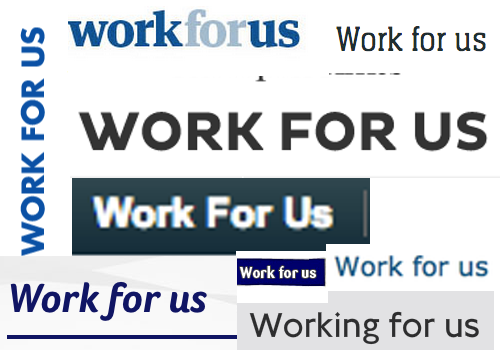Actually this post is very suitable for work.
I would suggest you organise a meeting and read this together, then decide how you might stop your meetings from being things that suck your soul and will to live. How might you explore the unique opportunity of having so many interesting, talented and passionate people in the same space for some uninterrupted time?
Part of my work as an improvement partner involves facilitating conversations with many people about many different things and I see firsthand how turned off people are when the word ‘meeting’ is even whispered. I have devised an approach that works for me to help my clients be more effective with their use of meetings.
The Big Why?
So imagine for a minute that drinking piss is not your thing – instead perhaps an ice cold lager or a chilled Pinot Grigio is. Would that make the container it is served in any more or less valuable?
The wholesale condemnation of meetings as ineffective is the equivalent of throwing the golden goblet away because you got served a pint of piss.
You can be better than this – you can recognise that the container is not the problem. The problem lies with what it contained – and you can change that!
Meetings don’t kill, poorly designed meetings do.
A meeting is a container. It promises nothing more than that a group of people will get together for a specified period of time. It is an invitation to something that needs to be designed. It is up to the designer whether it is to a party, a wake or a hanging!
That problem with meetings is that they are open to design, yet most people who schedule them don’t recognise that they need to be designed to be effective.
Think about how you or anyone you know learnt how to create a meeting – if you even actually learned it. Who did you learn to invite, how did you learn to frame the conversation, did you learn how to facilitate or even learn what to do to bring it to a successful conclusion. What did you learn about following up?
I would hate meetings too if it was just getting a bunch of people whose expected contributions are unknown together to talk incessantly and without purpose – generating lots of volume and no substance and then leaving more dissatisfied than they arrived.
Improve your next meeting, now!
The first thing I need you to do is memorise this:
A meeting is a gathering of passionate people contributing meaningfully to a purposeful conversation about something valuable
Go on, say it a couple more times, perhaps cut and paste it into a big poster, print it and stick it up all around your office, email it to your friends and colleagues.
This is all you need to remember in order to design a better meeting.
Once you’ve memorised this, then break it down:
Purposeful
What is the aim of the conversation. If you don’t have one consider not having a meeting until you get one.
If you do have one- it helps to frame it as a question. Especially because it’s easier to know when you have answered it or what else you need to do in order to answer it.
Example: “What can we do to avoid service disruption over the summer” vs “Summer Holiday cover”
Start the conversation by sharing the purpose and close it by exploring whether it has been answered and agreeing what happens next, when and by whom. Without the purpose, the next related conversations have no reference.
Conversation
Remember the best conversation you ever participated in – what was that like?
Did you feel heard and understood? Perhaps you felt like you fully understood what the other people were saying and you listened to understand rather than simply hearing in order to formulate a reply?
Meetings are about conversation – even if your experience to date has not been that – and great conversations are about bringing your whole person to the experience. So put away your laptop, your mobile phone and engage your ears and everything in between.
Valuable
Why should anyone come to this? What is in it for them?
If your answers are “because I told them to” and “nothing”, then consider not having a meeting.
People can accept your invitation because of who you are, but they stay and participate because it is of value to them.
As the organiser of a meeting, think through what the value is for each person – what will they learn, what can they share. If you struggle to identify these for anyone, don’t invite them. You are competing for their time against everything else they could be doing, so make it worthwhile.
As a recipient of an invitation – don’t simply attend because you were invited, consider what you want to learn and what you can share that would make it valuable for you. Remember this is your time too.
I tend to make a list of my invitees and write one thing each for what they will learn and share from this meeting. If the meeting is a while in the future, I might actually test those assumptions by asking them directly.
Passionate people contributing meaningfully
You might argue that passion has no place in meetings, or even that meetings kill passion. This may be evidenced from your experience – but I promise you, it could be so much better.
Starting from the default position that the people invited to join in this purposeful conversation are passionate invites you and everyone else to collaborate on not wasting that passion.
If that means holding it in a bar or stood up around whiteboards or role play to get participants contributing as meaningfully as they possibly can , then that’s what you do.
If you are meeting the same group regularly – ask what helps them contribute more and what impairs their ability to fully participate and then design your meetings to do more of what works and less/none of what impairs.
Hey you didn’t say anything about timing
Everyone who talks about meetings talks about how they should be short because long meetings are boring. I don’t buy this.
I don’t buy it because I have been in meetings that have been 30 minutes long and I have deeply resented every moment I wasted. Conversely I have been in meetings that were 6 hours long and loved every minute of it.
If you design your meeting to be valuable to everyone who is invited, work in breaks every 10 minutes roughly, add in whatever you can to maximise the way people can contribute, focus on having a great conversation, be clear about the purpose and facilitate to realise it – then you really don’t need to be too fussed about time.
I generally like to use my learning from Open Space Technology – things are over when they are no longer useful. They are no longer useful personally when I stop learning or sharing, and they are no longer useful for a group when no one is learning or sharing. Then close it.
What do you think of meetings?
How do you make them more effective and enjoyable? I’d love to hear and share.
Please consider sharing this, you might just save a life!
Disclaimer: I have never knowingly drank piss.
Featured image by: Katie Lips – CC BY 2.0










